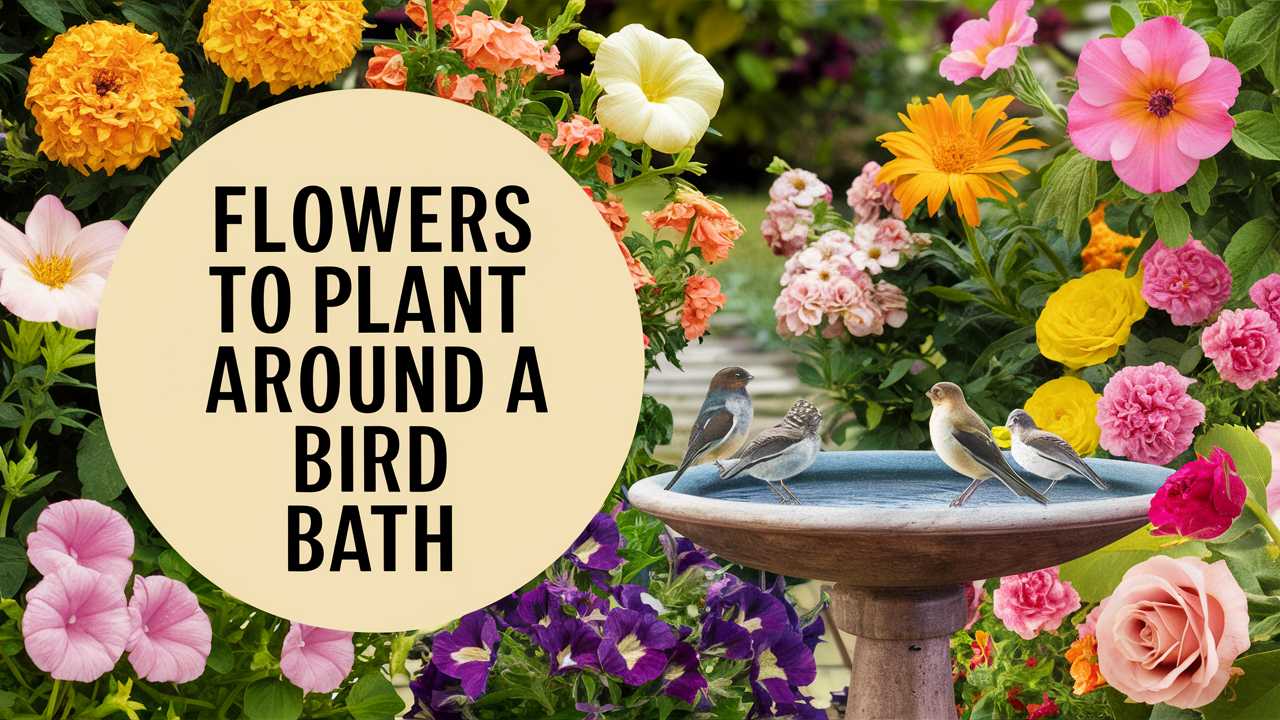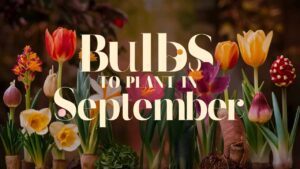Surrounding your bird bath with a delightful selection of flowers will help create an inviting oasis. This guide will explore twenty beautiful flowers to plant around your bird bath, ensuring that it’s not just a functional element of your garden, but also a visually stunning centerpiece that enhances the overall environment.
Perennial Salvia
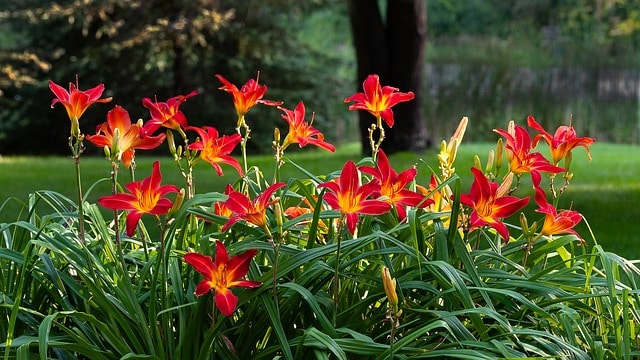
Salvia, or sage, is a perennial flower known for its vibrant spikes of color that attract bees and butterflies in addition to birds. Available in an enticing array of colors including deep blue, purple, and pink, Salvia can add a striking contrast to the green foliage that typically surrounds a bird bath. It prefers full sunlight and well-drained soil, flourishing in conditions that sustain many garden plants. This perennial’s long blooming season means that your garden will be alive with color from late spring to early fall, providing a constantly changing backdrop for your feathered visitors.
Moreover, Salvia doesn’t require a lot of maintenance once established. Its drought-resistant qualities make it an excellent choice for gardeners looking to conserve water while still providing an attractive feature for birds and pollinators. Excellent companions for this flower are plants with broader leaves that can shelter ground-feeding birds, creating a biodiverse environment that will also attract various insect species that birds feed on.
Coneflower
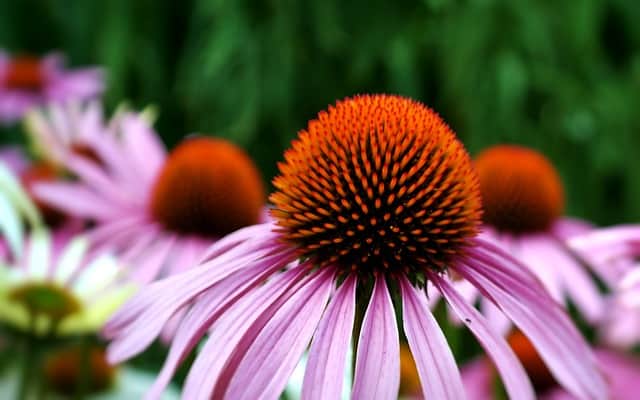
Also known as Echinacea, coneflowers are resilient blooms that create a rustic, prairie-inspired feel in your garden. The large, daisy-like flowers can range from vibrant purple to bright pink and even pristine white. Their easy-care nature means these perennials thrive in full sun and tolerate a variety of soil types, from sandy to clay. This adaptability makes them perfect for various garden environments, ensuring that they will flourish around your bird bath.
Coneflowers are popular for attracting a wide array of wildlife. The seeds produced later in the season are a favorite among many birds, especially goldfinches, that will flock to your garden for a snack. Planting coneflowers in clusters around your bird bath can create an attractive focal point while providing important food sources for birds, bees, and other pollinators throughout the summer.
Black-eyed Susan
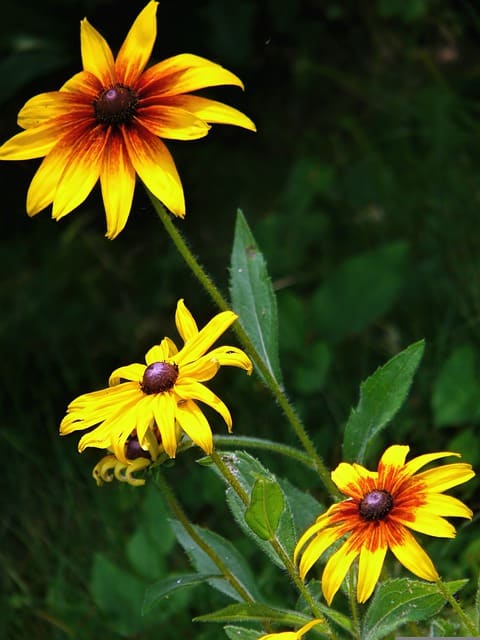
With their cheerful yellow petals and contrasting dark centers, black-eyed Susans (Rudbeckia) add warmth and vitality to any garden. These hardy perennials can bloom from mid-summer to fall, providing a long-lasting floral display that complements the serenity of your bird bath beautifully. They grow best in full sun and are very adaptable to different soil conditions, making them quite easy to care for.
Another remarkable characteristic of black-eyed Susans is their ability to attract various bird species. After the blossoms fade, the seed heads become a nourishing snack for birds throughout the fall. With their resilience and ease of growth, planting black-eyed Susans around your bird bath not only enhances its visual appeal but promotes an interconnected ecosystem where birds can thrive.
Daylily

Daylilies are another perennial flower worthy of your garden, renowned for their beautiful blooms that come in many colors and varieties. These adaptable plants thrive in almost any soil condition and can tolerate considerable shade, making them versatile companions for your bird bath regardless of its location. Blooming throughout the summer, daylilies not only provide stunning displays but also contribute to the lush ambiance surrounding your outdoor oasis.
The foliage of daylilies is dense and can offer shelter for small birds seeking refuge from predators. Furthermore, their long blooming period allows birds to enjoy continued visits to your area, making them an excellent choice for creating a garden that delights not only aesthetically but also functionally.
Catmint

Catmint (Nepeta) is a fantastic choice for your bird bath area, mainly because of its aromatic properties and ability to attract a wide range of wildlife. The lovely lavender-blue flowers bloom throughout the summer, drawing in bees and butterflies while also enchanting the senses with their scent. Catmint thrives in sunny areas with well-drained soil and is known for being drought-tolerant, making it a wonderful, low-maintenance addition to your garden.
In addition to attracting pollinators, the presence of catmint can invite various birds into your space, creating a lively and dynamic atmosphere around your bird bath. The plant’s lush green foliage adds texture as well, providing a beautiful contrast to the delicate flowers and the glistening water of the bird bath.
Zinnia
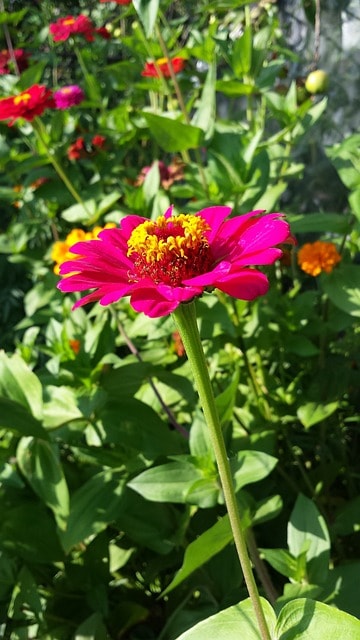
Zinnias are vibrant annual flowers that can bring a breathtaking array of hues into your garden space. From bold reds to soft pinks and bright yellows, the versatility of zinnias makes them an attractive choice for any garden surrounding a bird bath. These resilient plants bloom throughout the summer and tend to thrive in full sun, making them perfect for brightening up any outdoor area.
Zinnias are particularly effective at attracting butterflies and hummingbirds during their blooming periods, which also in turn can attract insectivorous birds that benefit from having these pollinators nearby. By creating a lively flowerbed filled with zinnias around your bird bath, you’re not only introducing vibrant colors but also increasing the allure of your garden to a variety of bird species.
Bee Balm

Bee Balm (Monarda) is a remarkable addition to any garden, offering both visual appeal and environmental benefits. With stunning tube-like flowers in shades of red, pink, and purple, this perennial plant blooms from early summer to fall, providing food for hummingbirds and bees alike. It thrives in sunny areas with rich, moist soil, making it an excellent choice for gardens where water is readily available.
Aside from its nectar-rich flowers, bee balm has aromatic foliage that can enhance the sensory experience of your garden. The lushness and height of this plant create visual layering around your bird bath, bringing diversity and richness to your landscape. Additionally, the foliage can provide shelter for small birds, encouraging them to visit and explore the inviting space you’ve created.
Petunia
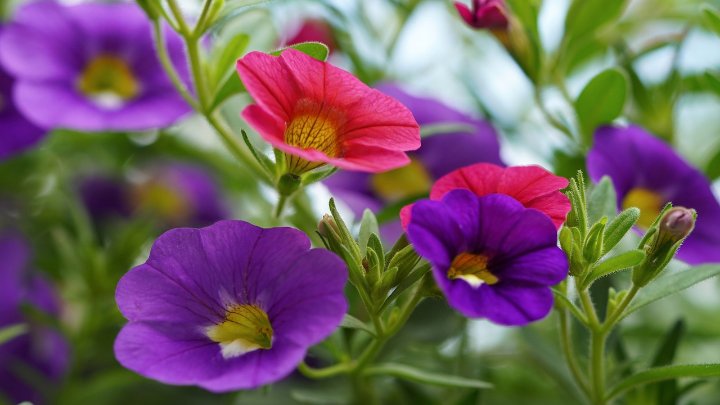
For those looking to add continuous color to their gardens, petunias are a brilliant choice. With an extensive variety of colors and patterns, these annuals thrive in full sun and are incredibly adaptable, making them suitable for many garden designs. Planting petunias around your bird bath can create a vibrant and inviting atmosphere that attracts not only birds but also butterflies due to their sweet nectar.
Furthermore, petunias can be grown in containers, allowing you to easily relocate them if needed. Their sprawling nature makes them excellent companions for other flowers, creating a diverse visual tapestry around your bird bath. As an added benefit, the fragrance of petunias can create a lovely sensory experience that enhances your garden’s inviting nature.
Lavender
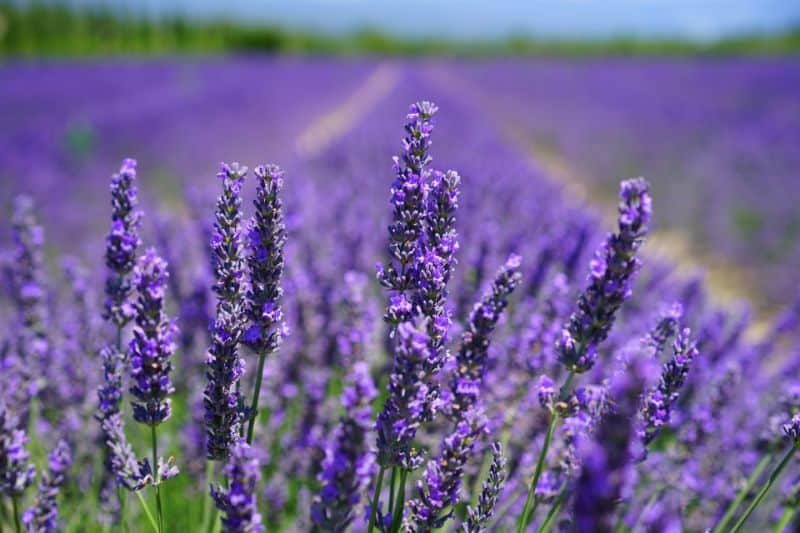
Lavender is a beloved herb known for its calming fragrance and stunning purple blooms. Surrounding your bird bath with lavender plants can evoke a sense of tranquility and peace in your garden. This perennial flourishes in sunny locations with well-drained soil, and once established, lavender is notably drought-resistant, which makes it an efficient choice for water-conscious gardeners.
Beyond its beauty and aroma, lavender attracts various pollinators, including bees and butterflies, contributing to the ecological balance of your garden. Additionally, its elegant spires lend a refined touch to the landscape surrounding the bird bath, enticing both birds and people to spend time near this serene feature in your garden.
Coreopsis
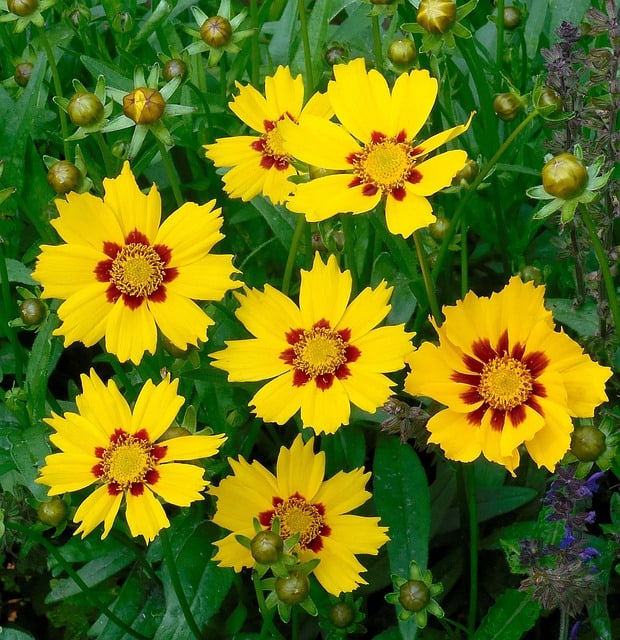
Coreopsis, commonly known as tickseed, is a hardy wildflower that shines with its bright yellow and orange flowers throughout the summer. These perennials thrive in sunny locations and are known for their ability to grow in poor soils, making them low-maintenance additions to your plantings. Their cheerful blooms not only enhance the appearance of your bird bath area but also attract a variety of pollinators.
The seeds produced by coreopsis later in the season are a great food source for birds, which means they contribute to the lifecycle of your garden ecosystem. Planting coreopsis around your bird bath will create a joyful atmosphere while also providing essential sustenance for your visiting avian friends.
Mexican Sunflower

For a tropical flair that brightens any garden, consider planting Mexican sunflowers (Tithonia). These show-stopping plants produce tall, vibrant orange-yellow blooms that are a feast for the eyes and serve as a magnet for butterflies and birds alike. They grow readily in full sun and can thrive in less-than-perfect soil, making them an easy and adaptable choice for gardeners.
As these sunflowers bloom, they create a lively, colorful display that stands tall near your bird bath, drawing the attention of curious birds. The height and visual impact of Mexican sunflowers can truly transform a garden space, making it a haven for wildlife and a delightful escape for you and your family.
Yarrow

Yarrow (Achillea) is a hardy perennial noted for its flat-topped flower clusters that come in shades of yellow, pink, and white. It prefers sunny locations and dry to moderately moist conditions, making it versatile and easy to care for. The unique feathery foliage adds attractive texture to your garden, while the prolific flowers bring an air of elegance to the area surrounding your bird bath.
Yarrow has long been valued for attracting beneficial insects, which can help control pests in the garden, making it an excellent choice for organic gardening. Its properties will support a diverse range of wildlife, creating a rich and balanced ecosystem near your bird bath, where both birds and insects can thrive.
Foxglove
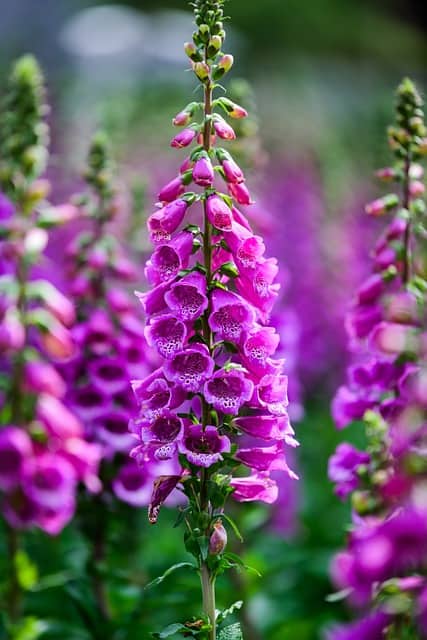
Foxglove (Digitalis) is a dramatic perennial known for its tall spikes of tubular flowers that can create stunning vertical interest in your garden. With hues ranging from deep purples to light pinks and whites, foxglove blossoms can add a touch of elegance and sophistication to the area around your bird bath. This plant prefers partial shade and well-drained soil, allowing it to thrive in a variety of garden settings.
However, it’s essential to keep in mind that foxglove is toxic if ingested, so planting it in areas where children or pets may frequent should be done with caution. Nevertheless, foxglove can create a beautiful backdrop for your bird bath, providing shelter for small birds while attracting beneficial pollinators such as bees and hummingbirds.
Phlox
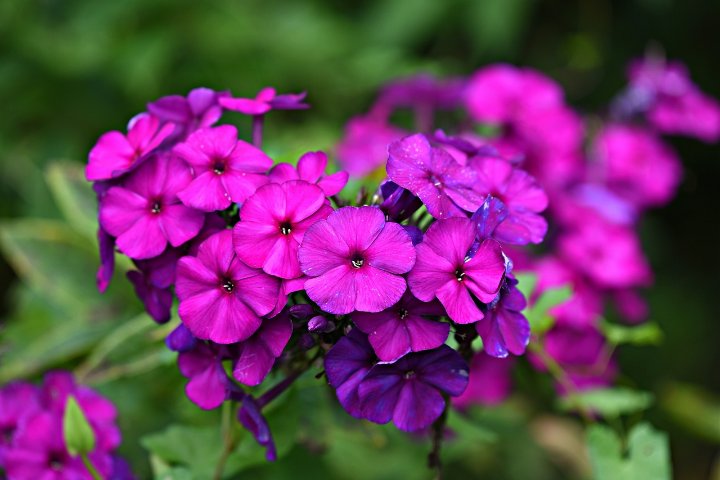
Phlox is another perennial flower celebrated for its fragrant, star-shaped blooms that attract a diverse range of insects and birds. This lovely flower can thrive in sunny to partially shaded areas, allowing for versatility in planting around your bird bath. Phlox blooms from late spring to fall, ensuring an ongoing display of color and fragrance that will entice both birds and their pollinator friends.
Phlox’s bushy growth not only creates beautiful visual layers in your garden but also provides the perfect backdrop for a bird bath. The combination of color, fragrance, and ecological benefits makes phlox a wise choice, enhancing your garden’s lushness while supporting avian life.
Heliopsis
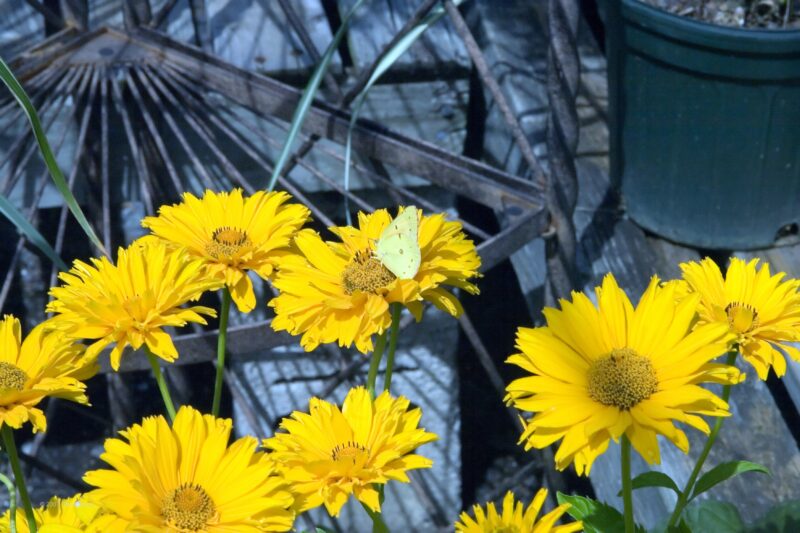
Heliopsis, often referred to as false sunflower, features bright yellow flower heads that bloom abundantly throughout the summer. This perennial is tolerant of a range of soil types and grows best in full sun, making it a wonderful addition to areas surrounding your bird bath. The cheerful blooms attract butterflies and bees, aiding in the overall health of your garden’s ecosystem.
What sets heliopsis apart is its longevity; the flowers will continue to bloom from mid-summer to early fall, maintaining vibrant color in your garden when other plants have begun to fade. Combining heliopsis with other blooms can create a playful and joyous atmosphere around your bird bath, inviting birds to stop by for a refreshing drink and a snack.
Marigold
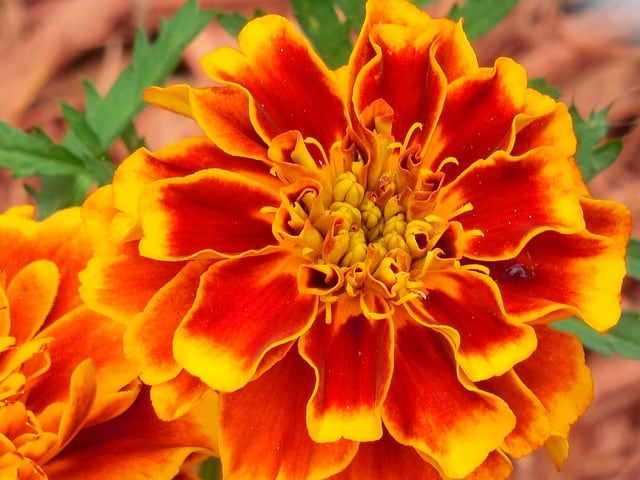
Marigolds are well-loved annual flowers that bring cheerful shades of orange and yellow to the garden, easily making them a favorite among gardeners. These vibrant blooms are easy to grow and maintain, thriving in sunny locations with well-drained soil. Marigolds not only attract birds due to their bright colors and central nectar but also serve a dual purpose in pest management, as their scent can deter unwanted garden pests.
Their long-lasting blooms add constant color to your bird bath area during the growing season. With a little care, these flowers can create a stunning floral display that both beautifies your outdoor space and invites birds to take a refreshing dip.
Amsonia
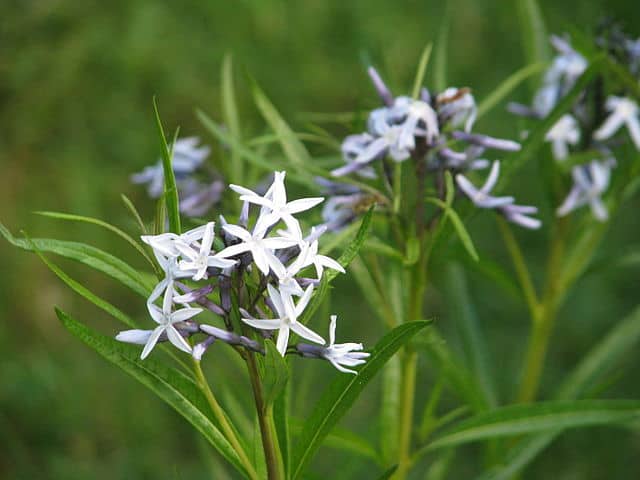
Amsonia, or blue star, is a lesser-known perennial that can truly enhance the beauty of your garden. Its star-shaped, light blue flower clusters bloom in the spring, creating a unique focal point that draws attention. Amsonia prefers full sun to partial shade and can tolerate a variety of soil types, making it a versatile option for any garden space.
What makes amsonia stand out is its stunning fall foliage, as the leaves turn a beautiful golden-yellow in autumn. This perennial plant not only offers gorgeous blooms in the spring but also provides interest year-round. By planting amsonia near your bird bath, you encourage a habitat rich in beautiful colors and textures, making it a captivating spot for birds and garden aficionados alike.
Nasturtium
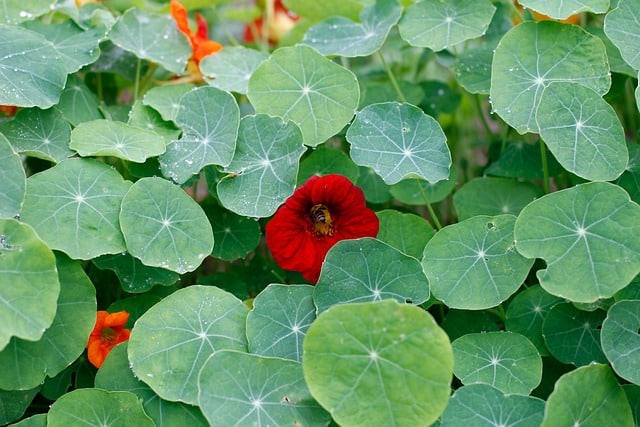
Nasturtiums add a touch of whimsy to your garden with their vibrant, bold flowers and edible leaves. These annuals are easy to grow and thrive in poorer soils, often flourishing where many other flowers may struggle. Their trumpet-like flowers can range from deep oranges to reds and yellows, bringing color and cheer to the area surrounding your bird bath.
One of the best features of nasturtiums is that they attract not only birds and butterflies but also can serve as a natural pest deterrent. Their leaves are edible and can add a peppery flavor to salads, making them a delightful addition to your kitchen, too. Planting nasturtiums around your bird bath invites interest while providing functional benefits, enhancing your garden’s energy and vibrancy.
Sweet Alyssum
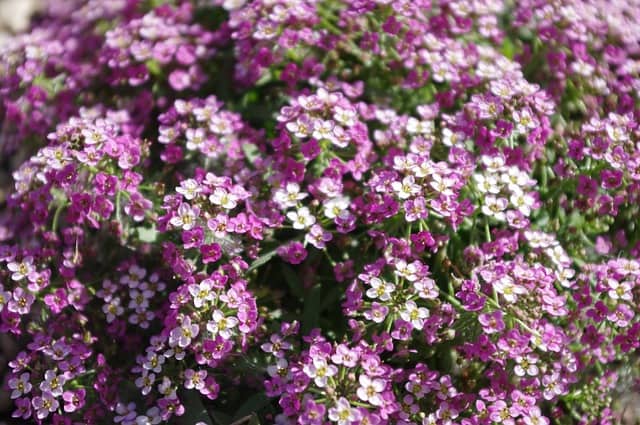
To create a soft, delicate ground cover around your bird bath, consider sweet alyssum. This low-growing annual produces clusters of tiny white or purple flowers that erupt in delightful fragrance, inviting both birds and beneficial insects into your garden. Sweet alyssum thrives in sunny to partially shaded areas, making it a strong choice for edging around your bird bath.
The gentle, sprawling nature of sweet alyssum helps to soften the area around your water feature, creating a serene atmosphere ideal for relaxation and enjoyment. Its fragrance will attract birds and bees, contributing to a vibrant ecosystem. By integrating sweet alyssum into your garden layout, you’re not only beautifying the space but also fostering an environment rich in life and activity.
Creating the Perfect Space
Now that you’ve explored a range of flowers to plant around your bird bath, considering how to integrate these selections into your garden design effectively is essential. The key to creating an attractive space lies in the arrangement—taking into account the height, color, and blooming seasons of the flowers you choose.
A good rule of thumb is to plant taller species like foxglove and bee balm toward the back while reserving shorter plants like sweet alyssum and petunias for the front. This layered approach not only creates visual intrigue but also ensures that each plant gets the sunlight and space it needs to flourish.
Additionally, aim to create pockets of color by grouping plants of the same species together. This not only enhances their visual impact but also makes it easier for birds to spot food sources, as they are often drawn to where the colors are most vibrant. Varied bloom times among your selections will create an ongoing spectacle that attracts birds and other wildlife throughout the growing season, ensuring your bird bath area remains lively and welcoming.
Final Thoughts
Planting flowers around your bird bath transforms not only its appeal but also your entire garden’s ambiance. Each flower contributes unique colors, shapes, and qualities that urbanites love to cultivate and admire.
As you embark on selecting your flowers, consider their growth habits, bloom times, and the overall theme of your garden. No matter your location or climate, choosing the right flowers will turn your bird bath into a delightful focal point that enhances your outdoor landscape, allowing you to enjoy nature’s beauty right in your backyard.


